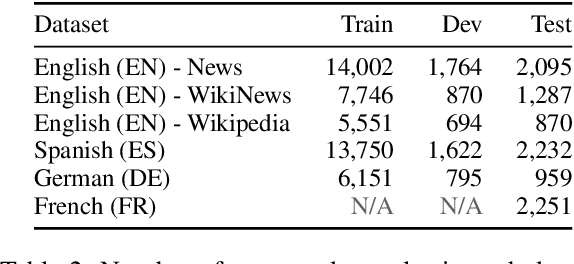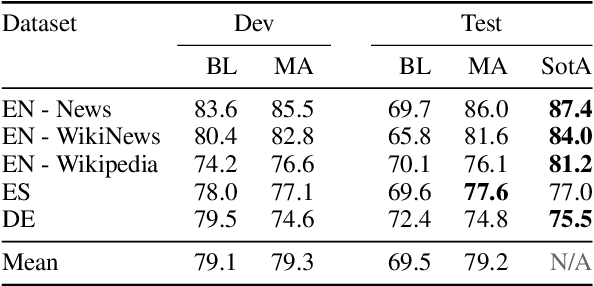Aneeq Ur Rehman
Strong Baselines for Complex Word Identification across Multiple Languages
Apr 11, 2019



Abstract:Complex Word Identification (CWI) is the task of identifying which words or phrases in a sentence are difficult to understand by a target audience. The latest CWI Shared Task released data for two settings: monolingual (i.e. train and test in the same language) and cross-lingual (i.e. test in a language not seen during training). The best monolingual models relied on language-dependent features, which do not generalise in the cross-lingual setting, while the best cross-lingual model used neural networks with multi-task learning. In this paper, we present monolingual and cross-lingual CWI models that perform as well as (or better than) most models submitted to the latest CWI Shared Task. We show that carefully selected features and simple learning models can achieve state-of-the-art performance, and result in strong baselines for future development in this area. Finally, we discuss how inconsistencies in the annotation of the data can explain some of the results obtained.
 Add to Chrome
Add to Chrome Add to Firefox
Add to Firefox Add to Edge
Add to Edge